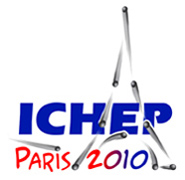Speaker
Anthony Morley
(CERN)
Description
With the start of the LHC operations at at center of mass energy of 7 TeV a large sample of low energy photons, mostly coming from the decay of neutral mesons, have been collected with the ATLAS detector. Due to the large amount of material upstream the electromagnetic (EM) calorimeter, about 50% of these photons will convert before reaching it. The converted photons are used as a tool to map the material of the ATLAS tracker in front of the EM calorimeter. The results of the material measurements relative to an accurately measured reference volume inside the tracker, together with an estimate of the most important sources of systematic uncertainties will be shown. The effect of the energy loss due to bremsstrahlung on the conversion vertex reconstruction precision is also discussed. The results from using the extremely pure electron sample provided by the converted photons to study the particle identification capabilities of the ATLAS Transition Radiation Tracker (TRT), are presented.
Furthermore, the measurement of the energy flow in the electromagnetic calorimeter (EM) is typically used to spot early detector problems, but it is also sensitive to the (radially integrated) amount of material in front of the electromagnetic calorimeter. Using the LHC collision data collected at a centre of mass energy of 7 TeV, the two dimensional (eta versus phi) occupancy maps of the EM calorimeter for each longitudinal layer have been extracted. Such a method provides a cross check of the total amount of material in front of the calorimeter and it is complementary to others only sensitive to the amount of material in the tracker. The measurement accuracy will be dominated by the systematic uncertainties and the ultimate accuracy is expected to be about 5% of the material upstream.




